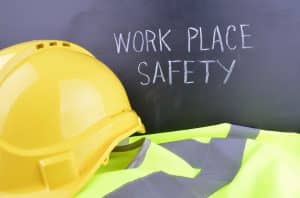
With the right preparation, safety meetings do not need to be a source of drudgery for workers. As you pursue a foolproof safety plan to protect your workers and your profits, here are some tips for conducting training sessions that will engage employees and successfully teach them what they need to know:
1) Opt for shorter but more frequent meetings in order to cover the necessary material without exhausting your audience members’ attention spans.
2) From the outset, make it clear how your presentation is relevant to your audience. If you begin the meeting with generic safety topics, you will risk appearing disconnected from the organization’s specific needs and challenges. Instead, focus on topics that are the most relevant to the company and delve into issues that have recently been problematic among employees. For example, without singling anyone out, you could bring up any incidents or close calls that have come to your attention and discuss how they could have been prevented.
3) Emphasize the positive as well. While accidents or near misses create powerful educational opportunities, it is important to highlight the organization’s strengths in order to inspire and motivate workers.
4) Use visual aids, such as slide shows, videos, or props. Remember that employees already have access to your company’s safety manual and can refer to it at their convenience, so merely reciting safety procedures will be boring and counterproductive. Visual aids, on the other hand, will grab your audience members’ attention and help them to retain valuable information.
5) Involve the audience with interactive games and other activities. For example, you may consider dividing the audience into teams and having them compete against each other to perform a safety drill in the least amount of time, or quizzing the audience and offering small prizes for correct answers. People are more likely to remember procedures that they have had the chance to apply.
6) Write safety protocols and handouts in plain English. Employees will be more likely to retain information that is simple, straightforward, and free of unnecessary jargon. If your audience includes non-native English speakers, be sure to offer translated materials so that all attendees will comfortably comprehend the important information you are conveying.
7) Encourage questions from the audience at the end of the session and provide them with contact information for individuals or resources that can help them with future questions. Consider offering employees the option of anonymously submitting concerns they may have, as they might be reluctant to openly express these concerns for fear of incriminating a colleague or supervisor.
Safety meetings and training sessions are integral to your company’s safety culture and can help to reduce workers’ compensation costs. Creative Business Resources will assist you in developing an effective safety plan and designing meetings that will engage, entertain, and educate your workforce. Contact us to learn more!











Leave A Comment
You must be logged in to post a comment.